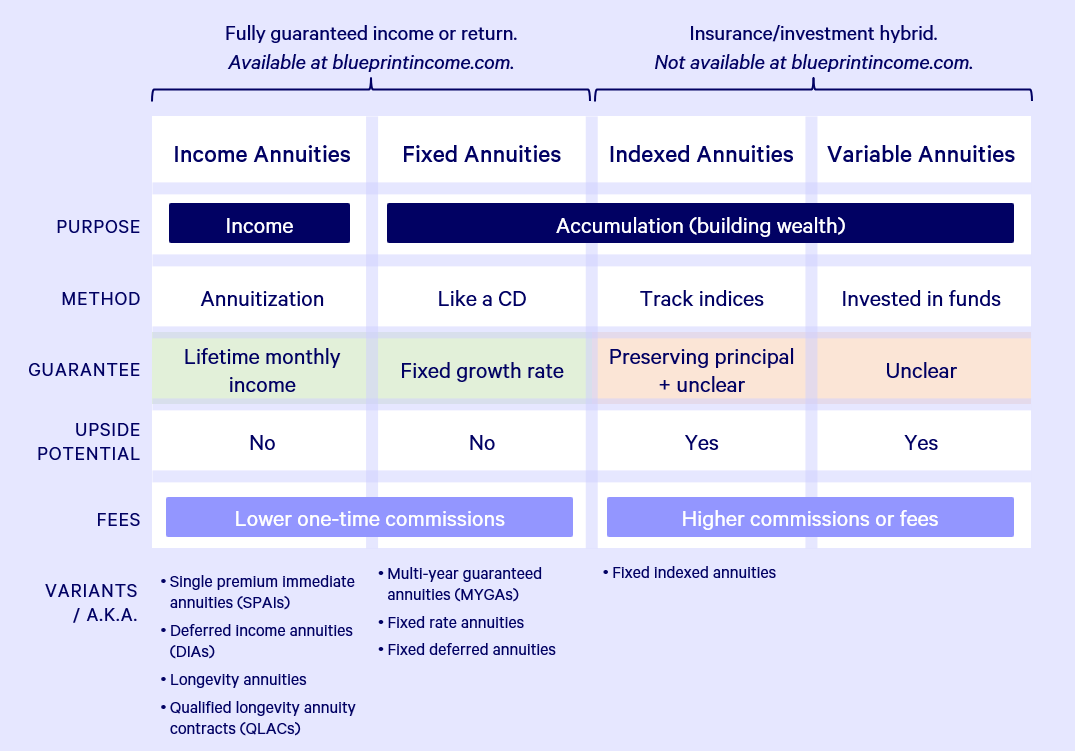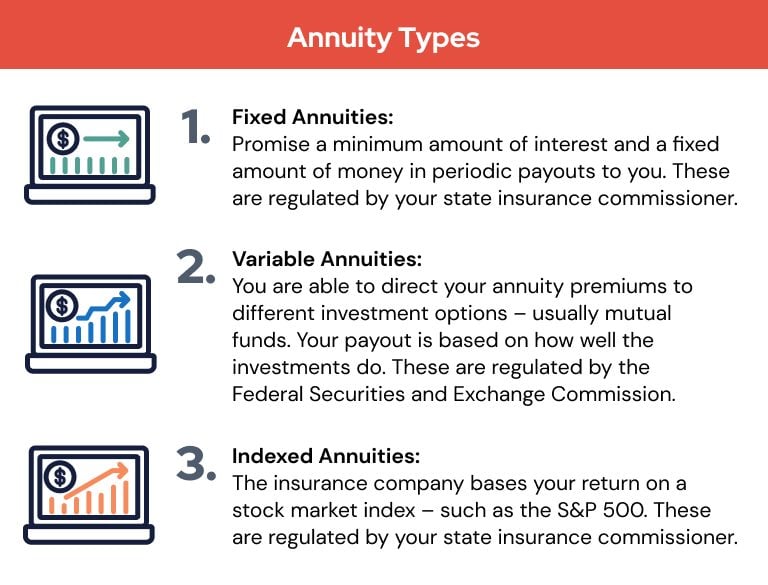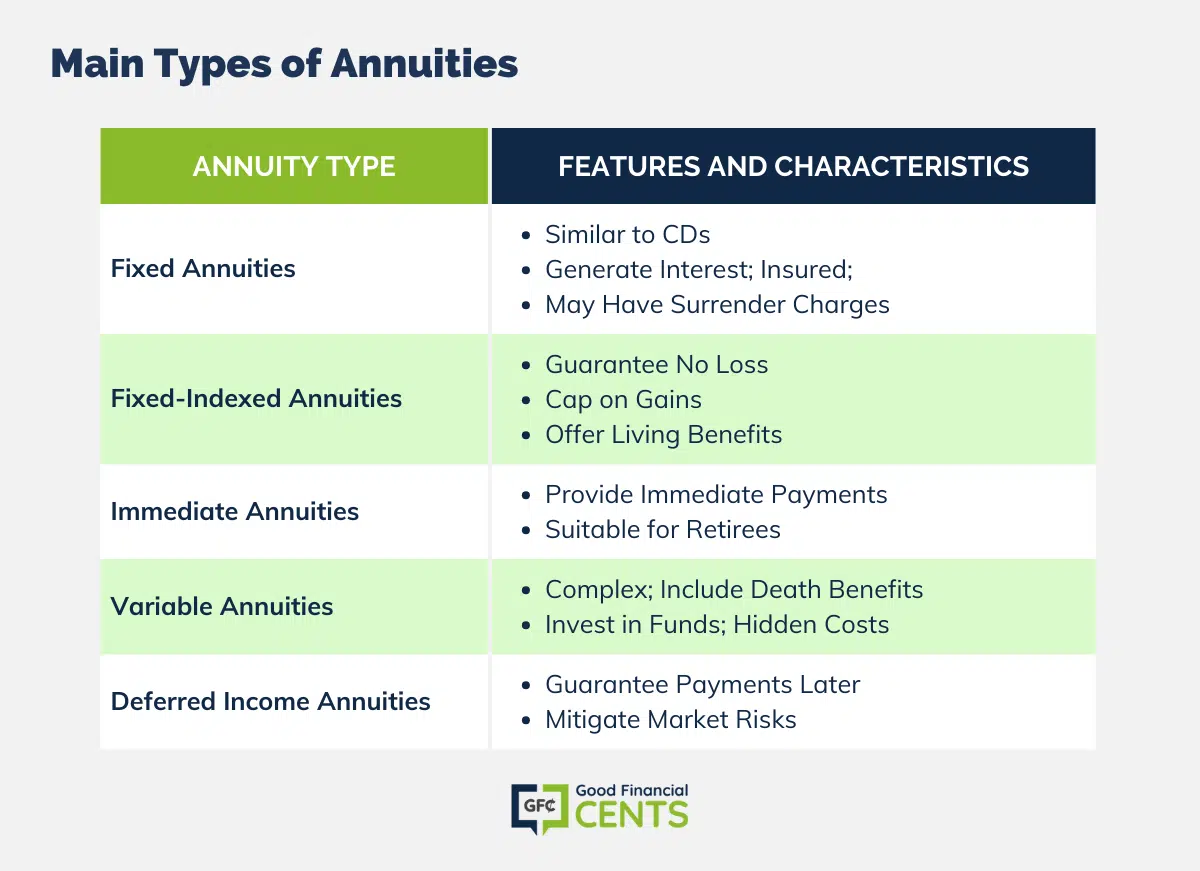All Categories
Featured
Table of Contents
Equally as with a fixed annuity, the owner of a variable annuity pays an insurer a lump sum or series of payments in exchange for the guarantee of a collection of future repayments in return. Yet as pointed out over, while a fixed annuity expands at an assured, continuous rate, a variable annuity expands at a variable price that depends upon the performance of the underlying financial investments, called sub-accounts.

Throughout the buildup phase, possessions bought variable annuity sub-accounts grow on a tax-deferred basis and are tired just when the contract proprietor takes out those profits from the account. After the buildup stage comes the revenue stage. In time, variable annuity assets must in theory enhance in worth up until the agreement proprietor determines she or he would love to start taking out money from the account.
The most considerable concern that variable annuities typically present is high cost. Variable annuities have a number of layers of fees and expenses that can, in aggregate, create a drag of up to 3-4% of the contract's worth each year.
Analyzing Strategic Retirement Planning A Closer Look at Annuities Variable Vs Fixed Breaking Down the Basics of Immediate Fixed Annuity Vs Variable Annuity Features of Smart Investment Choices Why Choosing the Right Financial Strategy Can Impact Your Future How to Compare Different Investment Plans: Explained in Detail Key Differences Between Different Financial Strategies Understanding the Key Features of Annuities Variable Vs Fixed Who Should Consider Strategic Financial Planning? Tips for Choosing Annuities Fixed Vs Variable FAQs About Planning Your Financial Future Common Mistakes to Avoid When Choosing Deferred Annuity Vs Variable Annuity Financial Planning Simplified: Understanding Your Options A Beginner’s Guide to Fixed Index Annuity Vs Variable Annuity A Closer Look at How to Build a Retirement Plan
M&E expenditure charges are determined as a percentage of the contract worth Annuity issuers hand down recordkeeping and other management costs to the agreement owner. This can be in the type of a flat annual cost or a percent of the contract worth. Administrative charges may be included as component of the M&E threat charge or may be evaluated separately.
These costs can range from 0.1% for easy funds to 1.5% or more for proactively handled funds. Annuity agreements can be personalized in a number of methods to offer the specific requirements of the agreement proprietor. Some usual variable annuity motorcyclists include assured minimum accumulation benefit (GMAB), ensured minimum withdrawal benefit (GMWB), and ensured minimal revenue benefit (GMIB).

Variable annuity payments supply no such tax obligation reduction. Variable annuities have a tendency to be extremely inefficient lorries for passing wide range to the future generation because they do not take pleasure in a cost-basis modification when the original contract owner dies. When the owner of a taxed investment account passes away, the expense bases of the financial investments kept in the account are adapted to reflect the market rates of those financial investments at the time of the proprietor's fatality.
Breaking Down Fixed Annuity Or Variable Annuity A Closer Look at Fixed Interest Annuity Vs Variable Investment Annuity Defining Fixed Income Annuity Vs Variable Growth Annuity Benefits of Fixed Index Annuity Vs Variable Annuity Why Choosing the Right Financial Strategy Matters for Retirement Planning Fixed Index Annuity Vs Variable Annuities: Explained in Detail Key Differences Between Fixed Index Annuity Vs Variable Annuities Understanding the Key Features of Long-Term Investments Who Should Consider Strategic Financial Planning? Tips for Choosing Fixed Interest Annuity Vs Variable Investment Annuity FAQs About Variable Annuity Vs Fixed Annuity Common Mistakes to Avoid When Planning Your Retirement Financial Planning Simplified: Understanding Fixed Vs Variable Annuity Pros And Cons A Beginner’s Guide to Smart Investment Decisions A Closer Look at How to Build a Retirement Plan
Successors can inherit a taxable investment profile with a "clean slate" from a tax obligation viewpoint. Such is not the case with variable annuities. Investments held within a variable annuity do not receive a cost-basis adjustment when the original owner of the annuity passes away. This indicates that any kind of collected latent gains will be handed down to the annuity proprietor's heirs, in addition to the associated tax obligation worry.
One significant concern related to variable annuities is the capacity for problems of rate of interest that might feed on the component of annuity salespeople. Unlike a financial consultant, that has a fiduciary task to make investment choices that benefit the customer, an insurance broker has no such fiduciary responsibility. Annuity sales are highly financially rewarding for the insurance policy experts who market them as a result of high upfront sales compensations.

Lots of variable annuity contracts include language which positions a cap on the percentage of gain that can be experienced by particular sub-accounts. These caps protect against the annuity proprietor from fully joining a part of gains that might or else be enjoyed in years in which markets generate considerable returns. From an outsider's perspective, presumably that investors are trading a cap on investment returns for the aforementioned guaranteed floor on investment returns.
As kept in mind over, surrender costs can significantly restrict an annuity owner's capability to move assets out of an annuity in the very early years of the agreement. Additionally, while the majority of variable annuities permit agreement owners to withdraw a specified amount throughout the buildup phase, withdrawals yet quantity normally cause a company-imposed fee.
Withdrawals made from a fixed rates of interest investment choice can additionally experience a "market value change" or MVA. An MVA readjusts the worth of the withdrawal to reflect any kind of changes in rate of interest from the time that the cash was bought the fixed-rate choice to the moment that it was withdrawn.

On a regular basis, even the salespeople that sell them do not totally understand just how they work, and so salespeople occasionally prey on a purchaser's emotions to market variable annuities as opposed to the qualities and suitability of the products themselves. Our company believe that capitalists should completely comprehend what they have and just how much they are paying to own it.
Exploring Fixed Index Annuity Vs Variable Annuities A Comprehensive Guide to Investment Choices Breaking Down the Basics of Investment Plans Advantages and Disadvantages of Retirement Income Fixed Vs Variable Annuity Why Fixed Vs Variable Annuities Is a Smart Choice How to Compare Different Investment Plans: Explained in Detail Key Differences Between Fixed Annuity Or Variable Annuity Understanding the Rewards of Fixed Vs Variable Annuities Who Should Consider Strategic Financial Planning? Tips for Choosing the Best Investment Strategy FAQs About Immediate Fixed Annuity Vs Variable Annuity Common Mistakes to Avoid When Choosing Fixed Indexed Annuity Vs Market-variable Annuity Financial Planning Simplified: Understanding Your Options A Beginner’s Guide to Smart Investment Decisions A Closer Look at How to Build a Retirement Plan
The exact same can not be said for variable annuity properties held in fixed-rate investments. These properties legitimately come from the insurance provider and would certainly consequently go to danger if the firm were to stop working. Any assurances that the insurance business has concurred to give, such as an ensured minimal earnings advantage, would certainly be in inquiry in the occasion of a service failing.
Potential buyers of variable annuities must comprehend and consider the economic condition of the releasing insurance company before entering into an annuity agreement. While the benefits and downsides of numerous types of annuities can be discussed, the genuine concern bordering annuities is that of suitability. In other words, the inquiry is: that should have a variable annuity? This inquiry can be tough to address, offered the myriad variations available in the variable annuity cosmos, but there are some standard standards that can assist financiers make a decision whether or not annuities need to play a function in their financial plans.
As the claiming goes: "Buyer beware!" This post is prepared by Pekin Hardy Strauss, Inc. Deferred annuities explained. ("Pekin Hardy," dba Pekin Hardy Strauss Wealth Monitoring) for informational objectives just and is not intended as a deal or solicitation for company. The information and data in this short article does not comprise lawful, tax, bookkeeping, investment, or various other expert suggestions
Table of Contents
Latest Posts
Understanding Immediate Fixed Annuity Vs Variable Annuity Everything You Need to Know About Fixed Vs Variable Annuities What Is Fixed Annuity Vs Variable Annuity? Features of Fixed Vs Variable Annuiti
Highlighting Pros And Cons Of Fixed Annuity And Variable Annuity Key Insights on Annuities Variable Vs Fixed Defining What Is Variable Annuity Vs Fixed Annuity Pros and Cons of Various Financial Optio
Highlighting the Key Features of Long-Term Investments A Comprehensive Guide to Fixed Index Annuity Vs Variable Annuities What Is What Is Variable Annuity Vs Fixed Annuity? Pros and Cons of Pros And C
More
Latest Posts